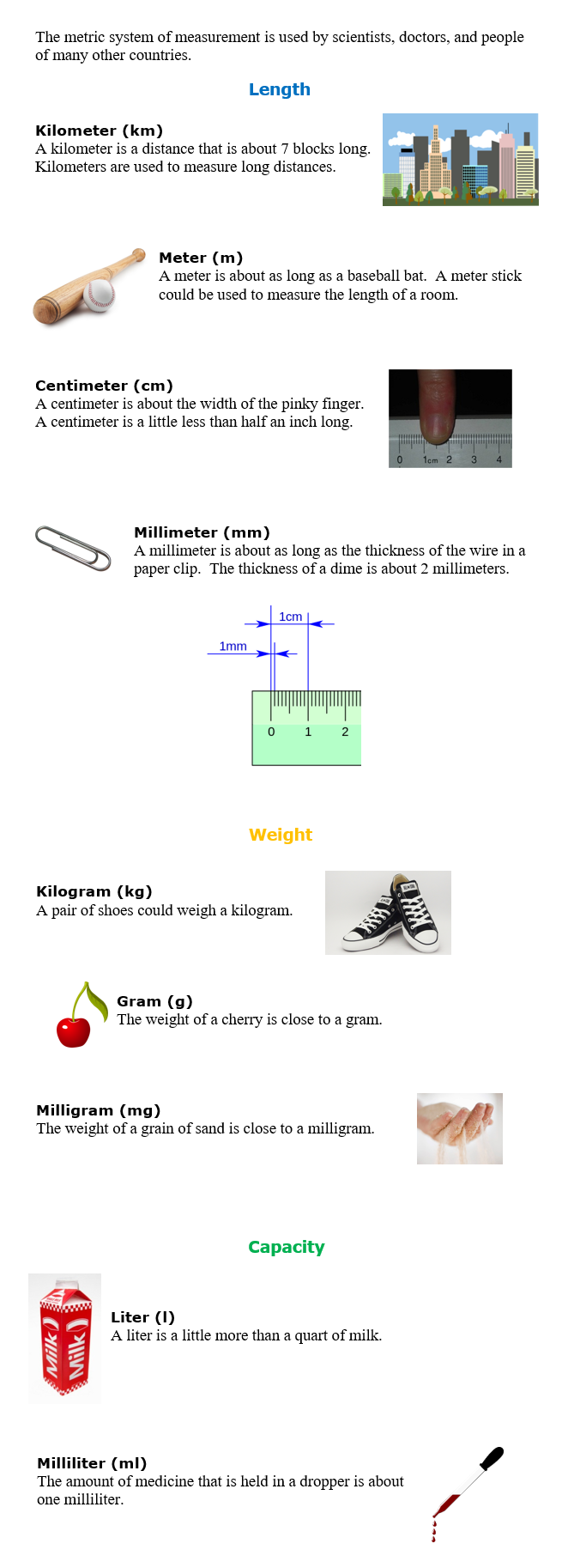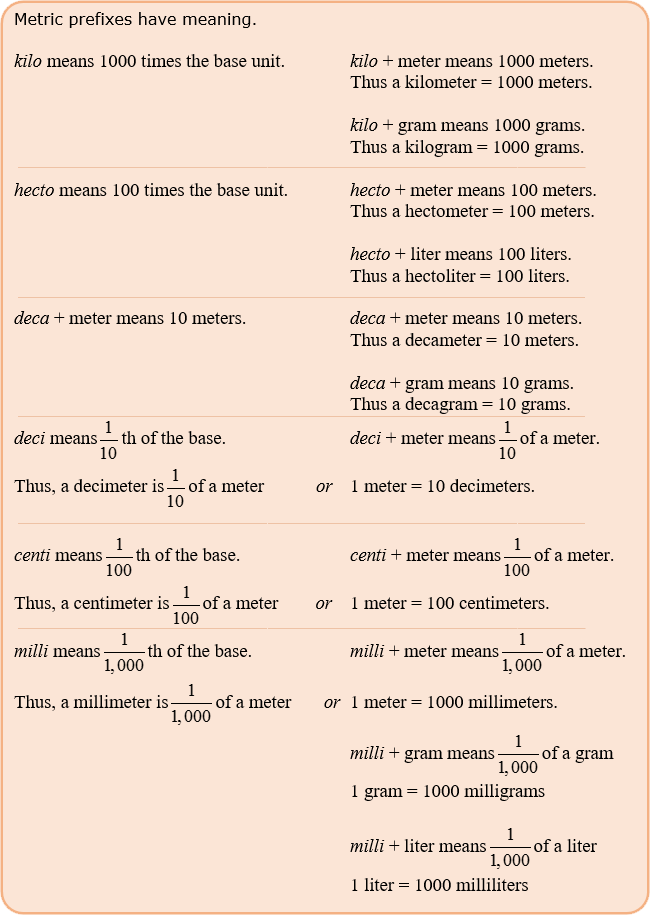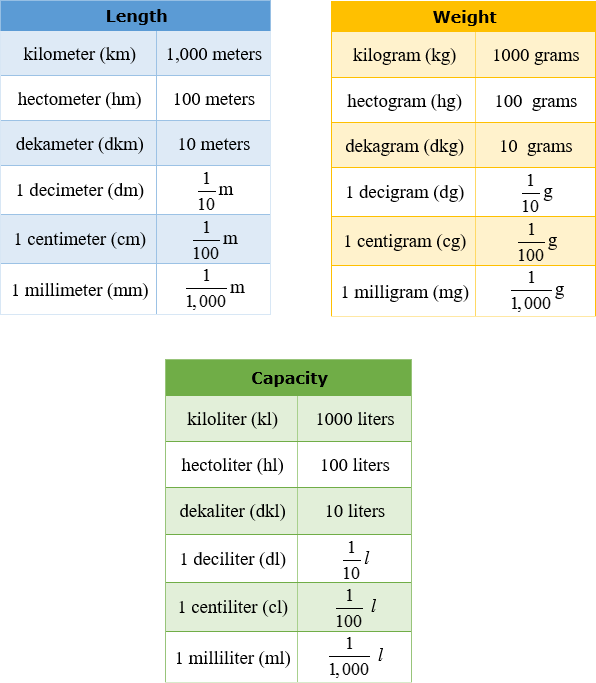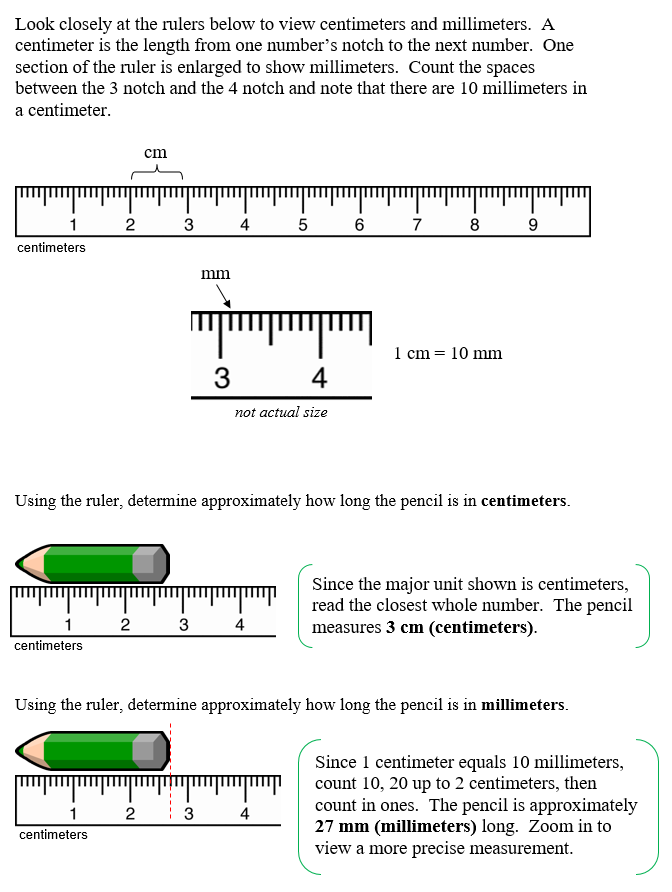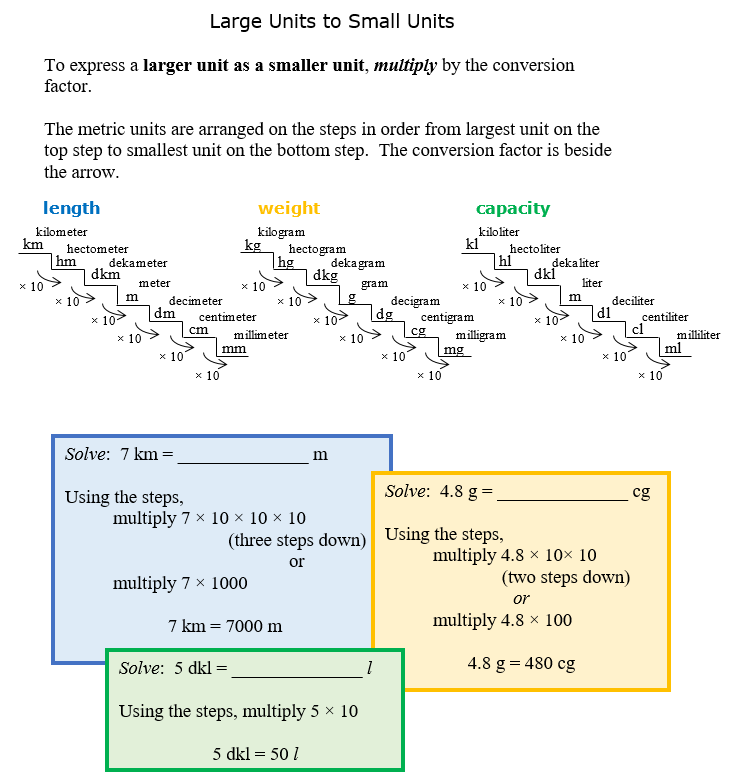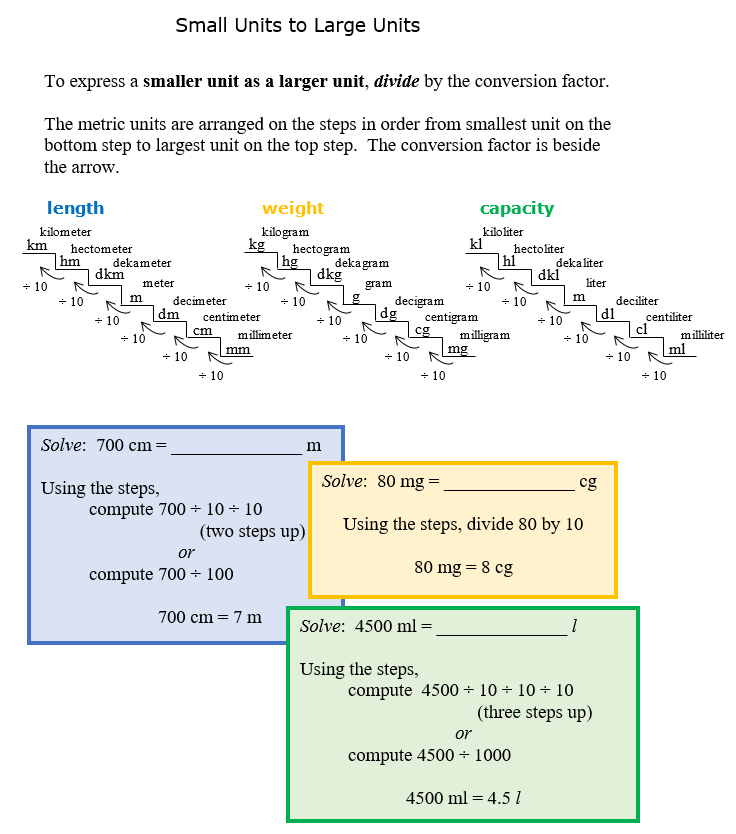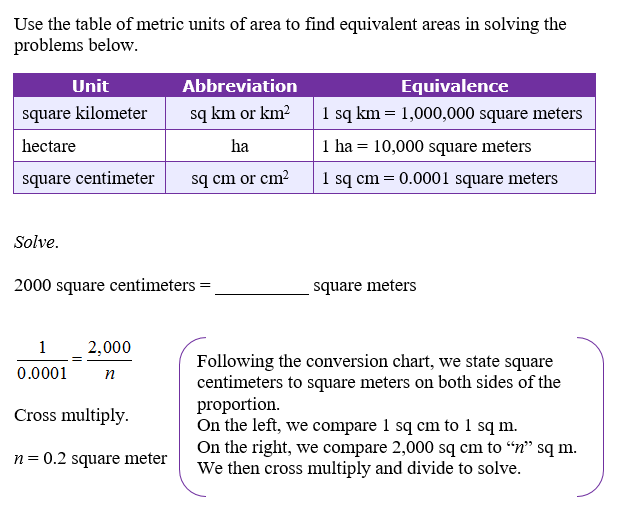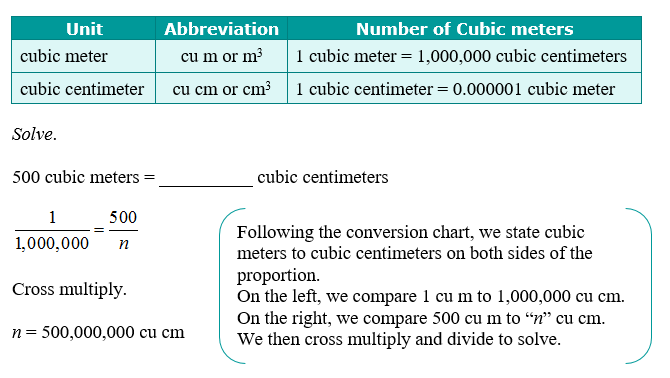PDF File
METRIC SYSTEM OF MEASUREMENT
The metric system of measurement is used in the world of science and medicine. Also, many European countries use the metric system rather than the customary measurement system. We will study units of length based on the meter, units of weight based on gram, and units of capacity based on the liter.
The metric units of measurement have the same prefixes for different types of units. For example: millimeter is a length unit, milligram is a weight unit, and milliliter is a unit of capacity. They all begin with the prefix, "milli". We will examine the metric system prefixes and then the metric system conversion tables to see how the metric units are connected.
To measure short lengths in the metric system, we use a metric ruler with millimeter and centimeter divisions. We will review measuring with a metric ruler.
We will convert larger metric units into smaller metric units through multiplication and the metric steps followed by expressing smaller metric units into larger metric units through division and the metric steps. The metric steps show the units in order from largest to smallest, with each unit on a higher step being equivalent to 10 times the smaller unit on the next lower step.
We will look at large metric units of area such as the hectare and small metric units of volume such as the cubic centimeter.
Metric Units
Metric System Prefixes
Metric System Conversion Tables
Measuring with Metric Units of Length
Converting Metric Units Using Multiplication
Converting Metric Units Using Division
Metric Units of Area
Metric Units of Volume
